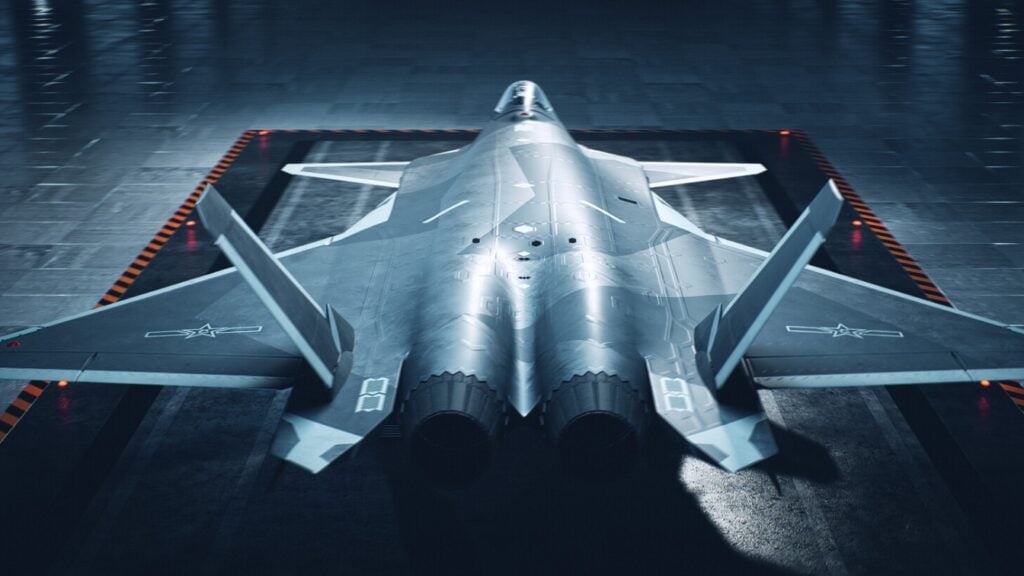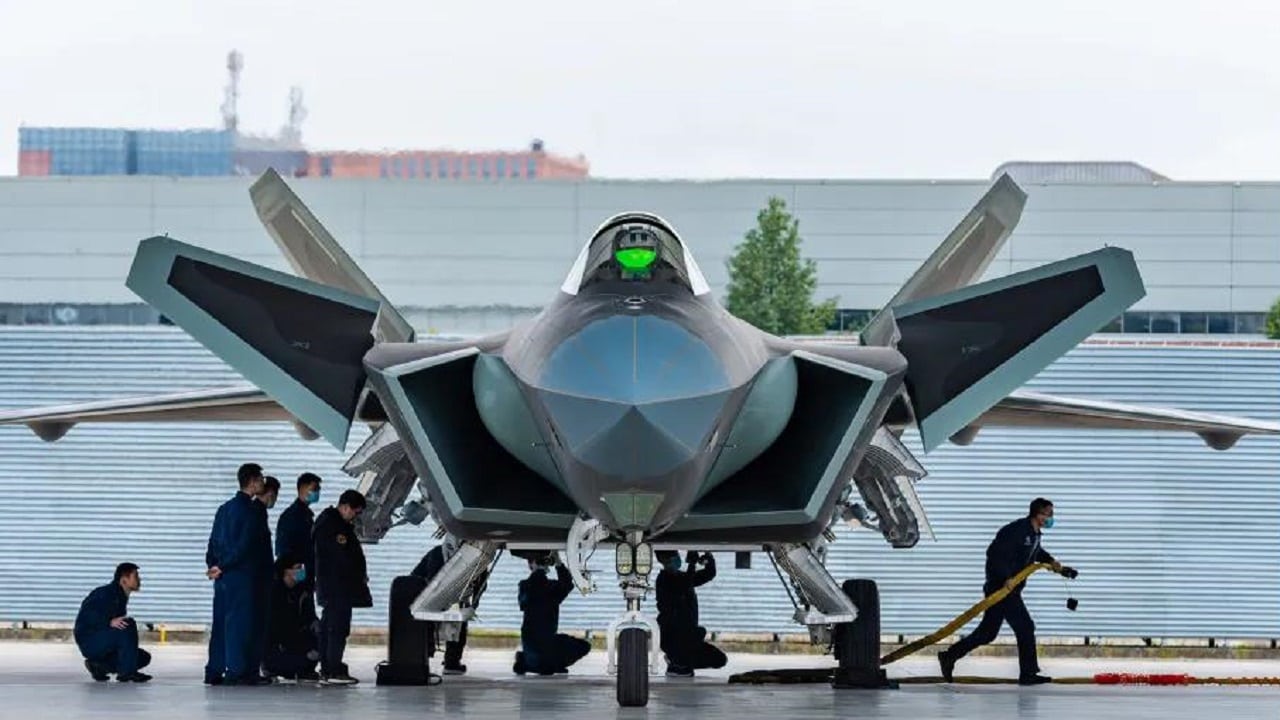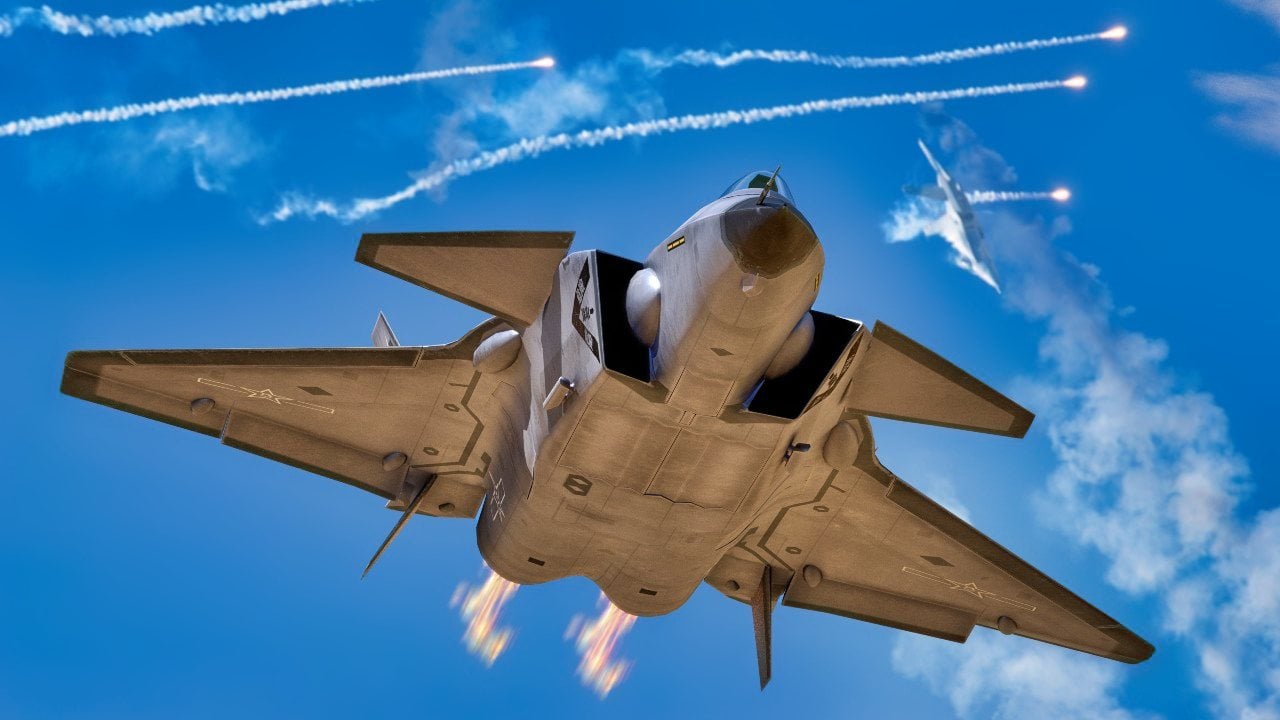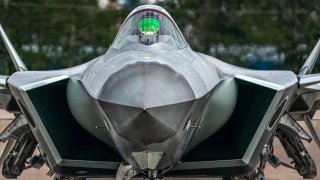China's J-20 Stealth Fighter Might Be a Flying 'Paper Tiger'
Beijing has great faith in the capabilities of the J-20, its first fifth-generation stealth fighter, and it has gone to great lengths to see that production has sped up considerably.
Summary: Beijing's Chengdu J-20 "Mighty Dragon," a domestically-built fifth-generation stealth fighter, represents China's ambitious foray into modern air superiority, competing with the U.S. Air Force's F-22 Raptor and F-35 Lightning II. Initially hindered by engine development challenges, the J-20 achieved a significant milestone with the successful integration of the WS-15 turbofan engines in June. Originating from the 1990s' J-XX program, the J-20 emphasizes stealth and advanced armament within a canard-delta configuration. Despite its innovative design, allegations persist that the J-20's development benefited from stolen U.S. technology, particularly resembling the F-22 and incorporating systems akin to the F-35's. However, U.S. officials have expressed skepticism about the J-20's dominance.
China's J-20 'Mighty Dragon': A Leap in Air Superiority or Stolen Valor?
Beijing has continued to hype the capabilities of its domestically-built "fifth generation" Chengdu J-20 "Mighty Dragon" stealth fighter – even as China struggled to develop a capable engine for the seemingly advanced aircraft. Finally, in June of this year, a new J-20 prototype flew as the Chengdu Aircraft Corporation powered by two WS-15 turbofan engines.
That event was seen as a major milestone for the engines, for the aircraft, and even for China, as the J-20 could live up to the Mighty Dragon moniker.
Origins of the J-20
The Chengdu J-20 was the result of Beijing's J-XX program of the 1990s, which set out to develop an air superiority fighter with precision strike capability. The result was the world's third operational "fifth generation" fighter aircraft – after the United States Air Force's Lockheed Martin F-22 Raptor and Lockheed Martin F-35 Lightning II.
The aircraft took its maiden flight in 2011.
Dubbed the Mighty Dragon was officially adopted and entered service with the People's Liberation Army Air Force (PLAAF) in 2017. It is a sleek, modern aircraft that has been noted for its canard-delta configuration, blended fuselage with low radar cross-section, and large canted twin tails. It is equipped with two large internal weapon bays for long-range and air-to-air missiles.
The J-20 further has two small side bays that can hold short-range air-to-air missiles.
Built Using Stolen U.S. Tech?
The J-20 was a "great leap forward" for Chinese aerospace, yet it has been noted that Beijing's efforts to build such a world-class military may have not come solely from domestic research and development (R&D) efforts, but rather from stealing from foreign powers.

In recent years, even close partner Russia has expressed frustration that China has so brazenly "borrowed" technological innovations as Beijing rolls out ever more advanced military hardware.
However, it is hard to view the J-20 and not see the influence of the F-22.
Many aircraft are indeed developed based on known features of existing aircraft, but Beijing didn't simply observe the F-22 – it reportedly stole the technology and designs. There is plenty of evidence to back up such claims.
First, it would be a tremendous coincidence that the J-20's development began in earnest only after the F-22 was unveiled, while some of the technology on the Chinese fighter has been described as almost identical to systems on the Lockheed Martin F-35 Lightning II Joint Strike Fighter.
It would be suspicious enough if the Chinese fighter merely resembled the F-22, but the fact that its sensor system is so close in design to the Lockheed Martin Electro-Optical Targeting System found on the Lightning II surely suggests that espionage played some role in the Mighty Dragon’s development.

Chinese hackers believed to be working at the behest of Beijing, had stolen files that contained sensitive information on the American aircraft – shortly before the Mighty Dragon was hatched and unveiled to the world.
In addition, there has been speculation that Russian aerospace secrets were also passed on to Beijing, again highlighting that China may be better at building aircraft than actually designing and developing them.
As a result, some U.S. officials have dismissed Beijing's claims regarding the J-20's capabilities.
"I don't think that it's a dominating aircraft at this point, compared to what we have [in terms of stealthy F-22 Raptors and F-35 Lightnings]," General Kenneth S. Wilsbach, head of the United States Pacific Air Forces, said during the 2023 iteration of the Air & Space Forces Association's annual symposium. "They've done some good copying … pretty much most of the technology from that airplane [the J-20] was stolen from the U.S."
More Mighty Dragons Are Being Hatched
Beijing has great faith in the capabilities of the J-20, its first fifth-generation stealth fighter, and it has gone to great lengths to see that production has sped up considerably.
According to a recent report from the South China Morning Post, China is now increasing production of its Mighty Dragon to balance the deployment of F-22s and F-35 Lightning IIs to the region.
Beijing has ramped up production of its domestically-built fifth-generation fighter, and the inventory of the J-20A will overtake the United States Air Force’s F-22, according to a report released earlier this year by the London-based International Institute for Strategic Studies (IISS) launched a few months ago.
John Chipman, director-general and chief executive of IISS, told reporters via an online launch event back in February for The Military Balance 2023 that China's combat aircraft inventory has dramatically increased over just the past five years.
"China's military modernisation remains the principal area of concern for Washington. China's defence spending increase of 7.0% in the 2022 budget, over 2021 figures, is its largest in absolute terms. While the new aircraft carrier attracted headlines, its investments in additional and more complex naval vessels continues apace while its air force is also improving its capabilities: numbers of J-20A combat aircraft have increased further and China has begun to field advanced military aircraft with domestically produced jet-engines," IISS announced in advance of its report.

The Military Balance database further showed that the People’s Liberation Army (PLA) across all branches has 150 J-20A fighters in service.
"If deliveries continue at the same speed, in 2023 the number of J-20As will eclipse the inventory of the U.S. Air Force's other fifth-generation combat aircraft, the F-22," Chipman explained.
Context is important, however. It is worth noting that the production of the F-22 Raptor – the world's first fifth-generation fighter – was scaled back due to its high cost. A total of 195, including eight test and 187 operational aircraft, were produced even though it was significantly fewer than the 750 that the U.S. Air Force had originally planned to acquire.
Thus it shouldn't be surprising that Beijing will have more J-20s than the U.S. has of the F-22s. Moreover, the U.S. Air Force is already on track to retire some of its older Raptors while additional F-35s will enter service. The United States will maintain an edge in the number of fifth-generation fighters for a long time to come.
It is also unclear how long it might take for the existing fleet to receive the WS-15 engines. Those aircraft still using the WS-10 Taihang – which was a stopgap to replace Russian-made engines – could best be described as hatchlings at best. Only now is the aircraft receiving an engine that could make it a truly capable warbird and worthy of being described as "mighty."
Author Experience and Expertise:
A Senior Editor for 19FortyFive, Peter Suciu is a Michigan-based writer. He has contributed to more than four dozen magazines, newspapers, and websites with over 3,200 published pieces over a twenty-year career in journalism. He regularly writes about military hardware, firearms history, cybersecurity, politics, and international affairs. Peter is also a Contributing Writer for Forbes and Clearance Jobs. You can follow him on Twitter: @PeterSuciu.
All Images are Creative Commons.

